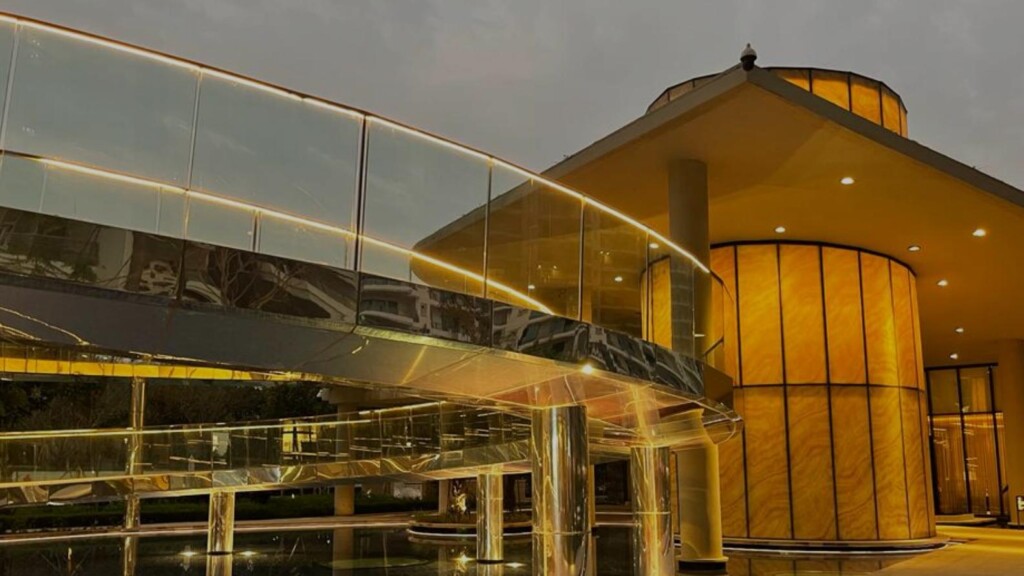Environmentalists say cities are getting warmer because of extensive use of glass in new buildings. Suhel Kachwala, Managing Director, FG Glass, which supplied glass to the Central Vista project, disagrees. Excepts of his chat with SustainabilityNext recently:
From delivering glass on a bicycle on narrow streets of Mumbai in 1976 Fishfa Glass has come a long way. It is one of the leaders in supplying glass to big buildings. The company, rebranded as FG Glass in 2005, has supplied glass to 700 plus projects in 35 countries.
How much do glass buildings contribute to green ratings?
The best part about glass is that it can be recycled. When buildings are rated as LEED Gold or LEED Platinum on 40 or 60 parameters, of them, 8 points are connected with glass. Glass plays a crucial role.
Why is glass better than conventional material
Glass is a highly recyclable, reusable, and is an eco-friendly material, making it a valuable component of green building practices. Every part of glass can be recycled, even broken pieces, to create new glass products, reducing waste and promoting sustainability.
There is a general view that glass buildings contribute to the heat map of towns and cities.
Glass buildings attract light, not heat. It is a scientific truth. You must use high-quality glass to attain the fullest of the advantages. You need a bare minimum of air conditioning in a glass building, plus an abundance of sunlight. Moreover, there is no alternative to Glass at all.
One more common myth is that glass is easily breakable. However, advancements in technology have led to safety glasses, bulletproof glasses, and high-performance glasses that are highly durable and not easily breakable when maintained and cleaned properly.
Glass, as a matter of fact, can be used smartly. Glass buildings can reduce a significant amount of heat that comes inside the building. They can reduce up to 3-5 degrees given the variables such as the environment around the building are considered. There is something called high-performing glass which is new to the market as the glass industry is evolving. It designed to have superior insulating properties, can reduce the need for heating and cooling in buildings. High-performance glass often contributes to earning green building certifications like LEED (Leadership in Energy and Environmental Design), which recognize environmentally friendly and sustainable construction practices.
By providing better thermal insulation, it helps maintain indoor temperatures, reducing the energy consumption for climate control. This leads to lower greenhouse gas emissions and a smaller carbon footprint.
Can you tell us more about the Central Vista project? What type of glasses and architecture have you used?
We’ve used fire-rated glass and bulletproof glass. Just because it is a high-security area, we had to work hard to find the balance between environmentally friendly and security-proof/safe glasses for the project.
Environmentalists say glass buildings are bird unfriendly
Bird-friendly glass is not being used in the Indian market. Though It’s been constantly evolving in the US markets. It has been a mandate in local laws to use bird-friendly glass to help migrant birds and avoid bird deaths. “Bird-friendly glasses” likely refer to glass products designed to prevent bird collisions.
Bird collisions with windows are a common problem, as birds cannot see transparent glass and perceive reflections as open spaces or a continuation of the environment. This leads to numerous bird injuries and deaths each year. They typically have special features that make the glass more visible to birds, helping them avoid collisions. India has not mandated this glass yet, but we look forward to it very soon.
In which other areas is Indian lagging behind in the glass industry?
We lack awareness of the use and impact of glass. Glass can be used for solar rooftops. This will be a total game-changer. India also needs to implement Building-integrated photovoltaics in buildings. Building-integrated photovoltaics (BIPV) are photovoltaic materials that are used to replace conventional building materials in parts of the building envelope such as the roof, skylights, or facades. They are increasingly being incorporated into the construction of new buildings as a principal or ancillary source of electrical power, although existing buildings may be retrofitted with similar technology. BIPV is being used in the US and other parts of the west, but India needs to recognize it as soon as possible.
How can we marry the best concepts of glass and architecture in India?
Glass and architecture in India are already being integrated successfully. From small applications like windows and interiors to large-scale structures like corporate offices, glass has found its place. The key is to continue exploring innovative ways to use glass sustainably in various construction projects.
What technology in the glass market will revolutionize how we look at glass?
The use of glass as a sustainable alternative to conventional non-renewable materials will be a game-changer for the glass market. Expect significant growth and advancements in the coming years.
Check out https://fgglass.com











